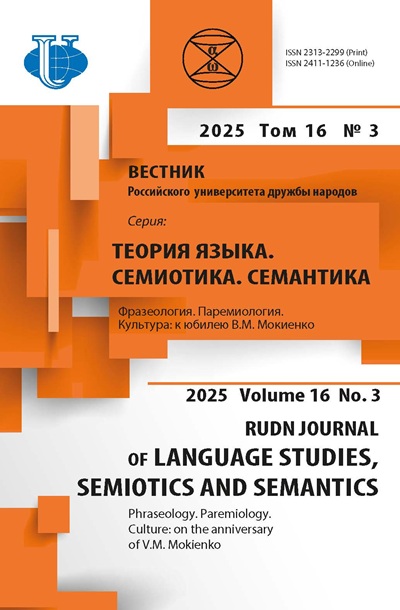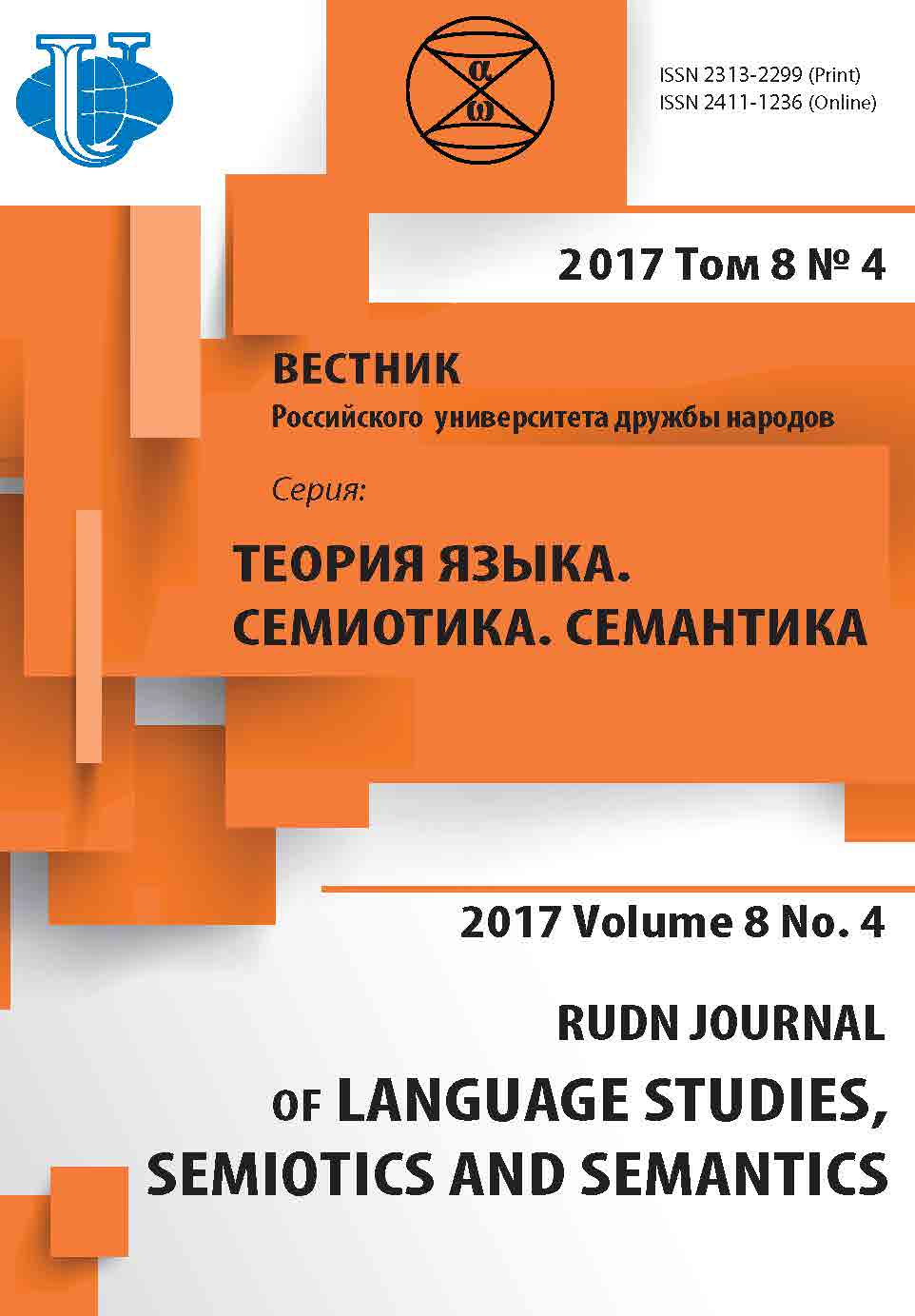БЕЖАТЬ ИЛИ ЛЕТЕТЬ СТРЕЛОЙ: ЛЕКСИКА ДВИЖЕНИЯ В ПОВЕСТИ Н.В. ГОГОЛЯ «НЕВСКИЙ ПРОСПЕКТ» И ЕЕ ИТАЛЬЯНСКОМ ПЕРЕВОДЕ
- Авторы: Школьникова ОЮ1, Дементьева АВ1
-
Учреждения:
- Московский государственный университет им. М.В. Ломоносова
- Выпуск: Том 8, № 4 (2017)
- Страницы: 811-825
- Раздел: СТАТЬИ
- URL: https://journals.rudn.ru/semiotics-semantics/article/view/17959
- DOI: https://doi.org/10.22363/2313-2299-2017-8-4-811-825
- ID: 17959
Цитировать
Полный текст
Аннотация
В статье рассматриваются лексические средства итальянского и русского языков, использующиеся для вербализации понятия «движение». На основе компонентного анализа выделяется ряд дифференциальных сем - способ передвижения, степень интенсивности движения, цель движения и ее отсутствие, горизонтальное и вертикальное движение, направление движения относительно других объектов, движение во взаимодействии с другими субъектами и объектами, движение как метафора. Результаты исследования показали различия в семантической структуре русской и итальянской лексических единиц и выявили способы компенсации смысловой составляющей оригинала в итальянском переводе.
Об авторах
О Ю Школьникова
Московский государственный университет им. М.В. Ломоносова
Автор, ответственный за переписку.
Email: chkolnikova@mail.ru
Школьникова Ольга Юрьевна, доктор филологических наук, профессор кафедры романского языкознания филологического факультета МГУ им. М.В. Ломоносова; научные интересы: сопоставительные исследования романских языков и культуры в синхронии и диахронии, история латинского письма, проблемы издания рукописных текстов, теория и практика перевода
Ленинские горы, Москва, ГСП-2, 119992А В Дементьева
Московский государственный университет им. М.В. Ломоносова
Email: chkolnikova@mail.ru
Ленинские горы, Москва, ГСП-2, 119992
Список литературы
- Гоголь Н.В. Невский проспект // Сочинения. М.-Л., 1928. Том 2. С. 5-38.
- Gogol, N.V. Il Corso Neva // Tutti i racconti. A cura di Leone Pacini Savoj. Roma, 2012. pp. 381-404
- Гак В.Г. Сравнительная лексикология французского и русского языков. Ленинград: Просвещение, 1977.
- Зализняк А.А., Левонтина И.Б., Шмелев А.Д. Ключевые идеи русской языковой картины мира. М.: Языки славянской культуры, 2005.
- Ожегов С.И. Словарь русского языка. М.: Советская Энциклопедия, 1973.
- Ефремова Т.Ф. Новый словарь русского языка. М.: Русский язык, 2000.
- Никитина И.Г. Способы репрезентации концепта движение в разноструктурных языках: на материале русского, английского и чувашского языков: дисс.. канд. филол. наук: Чувашский государственный университет им. И.Н. Ульянова, 2010. http://www.dissercat.com/ content/sposoby-reprezentatsii-kontsepta-dvizhenie-v-raznostrukturnykh-yazykakh#ixzz4kTqKseru (дата обращения 10.06.2017).
Дополнительные файлы












